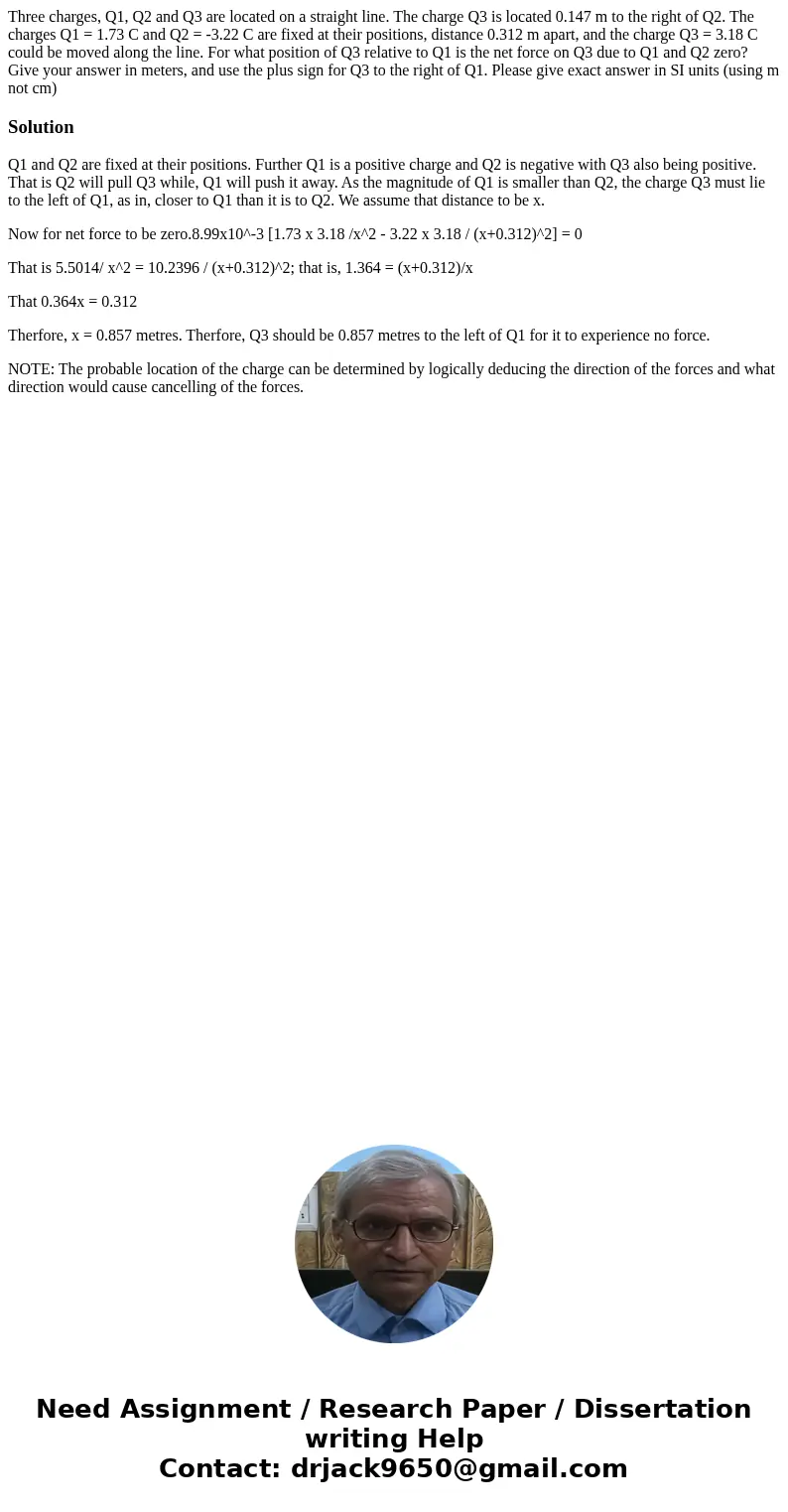Three charges Q1 Q2 and Q3 are located on a straight line Th
Three charges, Q1, Q2 and Q3 are located on a straight line. The charge Q3 is located 0.147 m to the right of Q2. The charges Q1 = 1.73 C and Q2 = -3.22 C are fixed at their positions, distance 0.312 m apart, and the charge Q3 = 3.18 C could be moved along the line. For what position of Q3 relative to Q1 is the net force on Q3 due to Q1 and Q2 zero? Give your answer in meters, and use the plus sign for Q3 to the right of Q1. Please give exact answer in SI units (using m not cm)
Solution
Q1 and Q2 are fixed at their positions. Further Q1 is a positive charge and Q2 is negative with Q3 also being positive. That is Q2 will pull Q3 while, Q1 will push it away. As the magnitude of Q1 is smaller than Q2, the charge Q3 must lie to the left of Q1, as in, closer to Q1 than it is to Q2. We assume that distance to be x.
Now for net force to be zero.8.99x10^-3 [1.73 x 3.18 /x^2 - 3.22 x 3.18 / (x+0.312)^2] = 0
That is 5.5014/ x^2 = 10.2396 / (x+0.312)^2; that is, 1.364 = (x+0.312)/x
That 0.364x = 0.312
Therfore, x = 0.857 metres. Therfore, Q3 should be 0.857 metres to the left of Q1 for it to experience no force.
NOTE: The probable location of the charge can be determined by logically deducing the direction of the forces and what direction would cause cancelling of the forces.

 Homework Sourse
Homework Sourse